Amelia’s Aero Club is a middle school program for highly-motivated 6th-8th grade girls who are from across Washington State. The program organizes events related to Science, Technology, Engineering, Aviation, Art, and Mathematics (STEA2M) and the legacy of Amelia Earhart. This year it included a visit to the BioRobotics lab where they interacted with a haptic simulation and teleoperated a surgical robot during their visit.
is a middle school program for highly-motivated 6th-8th grade girls who are from across Washington State. The program organizes events related to Science, Technology, Engineering, Aviation, Art, and Mathematics (STEA2M) and the legacy of Amelia Earhart. This year it included a visit to the BioRobotics lab where they interacted with a haptic simulation and teleoperated a surgical robot during their visit.
Thank you Summer 2015 Researchers!
Over the last couple months the BRL has hosted some great summer researchers. We hosted several undergraduate and two local high school teachers who worked side-by-side BRL graduate students and faculty on advancing some of the lab’s ongoing projects. The topics that they worked on included from the neuroethics of DBS for depression, new password methods, and including haptic feedback into BCI tasks. They all produced excellent work over the summer and we wanted to take the opportunity to highlight their accomplishments here. A big thanks goes out to our summer researchers for dedicating so much time towards advancing the lab’s research!
Hale Soloff, an under graduate neuroscience research student from Ursinus College, joined the Neuroethics thrust at the Center for Sensorimotor Neural Engineering’s Research Experience for Undergraduates (REU) program (more information here). He teamed up with the BioRobotics Laboratory to analyze ethical issues surrounding the use of new closed-loop deep brain stimulation (DBS) technology for the treatment of depression.
graduate neuroscience research student from Ursinus College, joined the Neuroethics thrust at the Center for Sensorimotor Neural Engineering’s Research Experience for Undergraduates (REU) program (more information here). He teamed up with the BioRobotics Laboratory to analyze ethical issues surrounding the use of new closed-loop deep brain stimulation (DBS) technology for the treatment of depression.
Acknowledging a gap in the literature of how deep brain stimulation affects moral understanding, Hale tackled questions of authority and responsibility; can someone with DBS be held accountable for all of their actions, or does the device exert undue influence on behavior, attitudes, and decision making? Does the device take away its user’s capacity for consent and free will, or does it restore that capacity which the depression took away? How much control should patients with depression have over their own DBS, and thereby their own emotions? Is there such a thing as the “correct” level of happiness, and does the patient, clinician, policy maker, DBS engineer, or somebody else get to make that decision? And finally, how does a closed-loop stimulator, which can record and analyze brain activity to adjust stimulation accordingly, change the answers to these questions? Hale was guided by mentor Tim Brown and PI Sara Goering in studying the moral discussions surrounding open-loop DBS, and by working closely with Dr. Howard Chizeck and the BioRobotics Lab to learn more about closed-loop DBS he raised new relevant questions as to how this technology affects its users and those around them.
Hale says about his research, “The way the public and media perceive new medical technologies like closed-loop DBS is very important. Exploring these questions is the first step to educating future patients, clinicians, and lawmakers about how these devices work and affect us.”
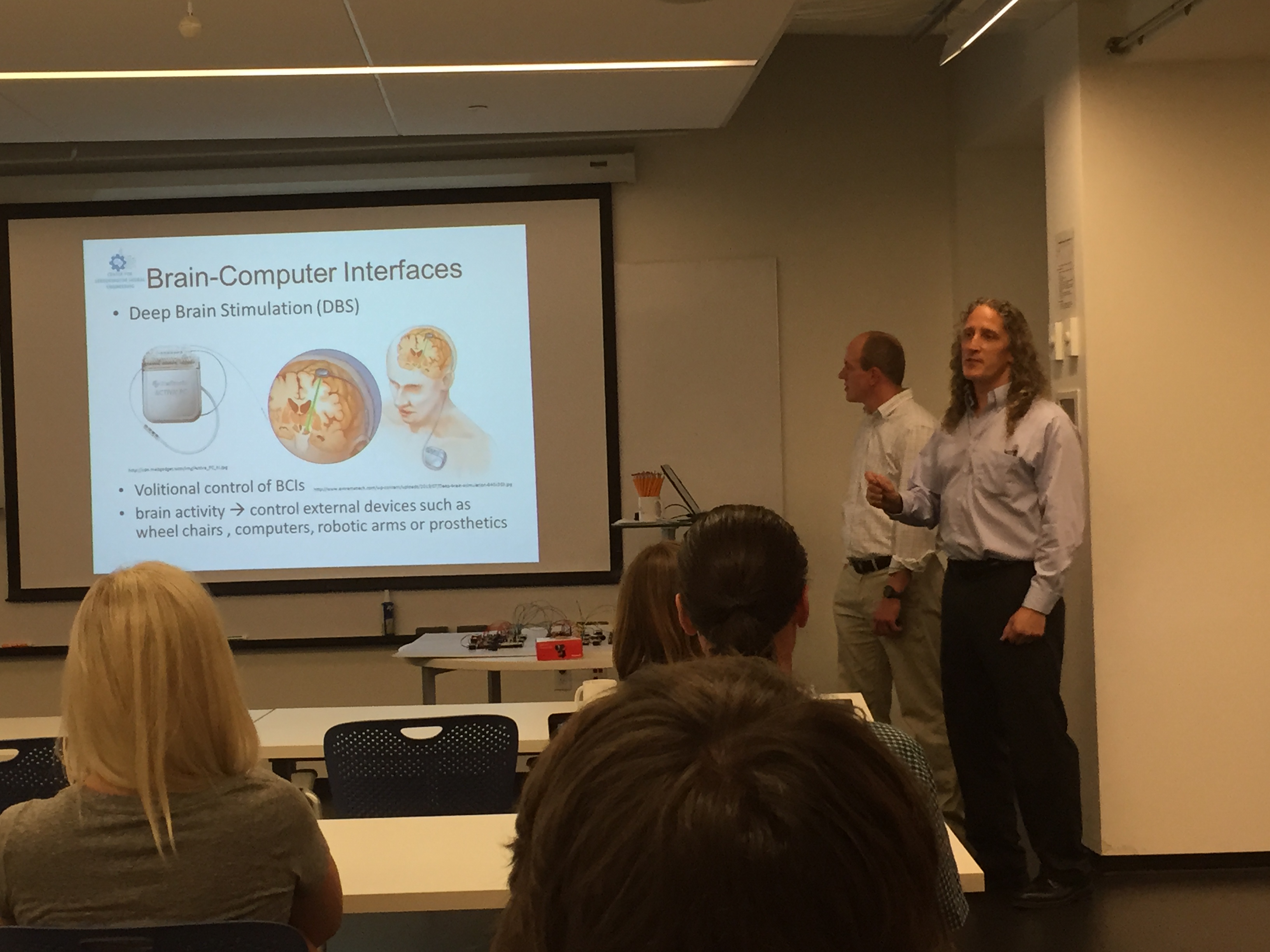 Two local high school teachers went back to school this summer in the BioRobotics Lab. Larry Bencivengo, a veteran Biology teacher from Mercer Island High School, and Paul Zimmer, who teaches Chemistry at South Kitsap high school, spent 7 weeks in the BRL as part of CSNE’s Research Experience for Teachers (RET) program. Bencivengo and Zimmer were part of a cohort of 6 teachers who worked part time in one of the labs associated with CSNE while also developing curriculum which they will pilot in their classrooms this school year. Read more about the CSNE RET Program here.
Two local high school teachers went back to school this summer in the BioRobotics Lab. Larry Bencivengo, a veteran Biology teacher from Mercer Island High School, and Paul Zimmer, who teaches Chemistry at South Kitsap high school, spent 7 weeks in the BRL as part of CSNE’s Research Experience for Teachers (RET) program. Bencivengo and Zimmer were part of a cohort of 6 teachers who worked part time in one of the labs associated with CSNE while also developing curriculum which they will pilot in their classrooms this school year. Read more about the CSNE RET Program here.
The task that these two “teacher-students” took on relates to ongoing research in the BRL, led by doctoral candidates Jeffrey Herron and Margaret Thompson, to train patients to gain greater control of BCIs such as Deep Brain Stimulators used to suppress Parkinsonian tremors. Zimmer and Bencivengo attempted to incorporate haptic feedback into a BCI training program developed by Herron and Thompson by using the Phantom Omni haptic mouse. They were successful in learning to incorporate haptic properties into Unity, the game development platform that Thompson and Herron used to develop the current version of the BCI training program. The virtual sense of touch provided by the Phantom Omni promises to improve patient performance in BCI training. Thanks to the research at BRL, these training programs may soon be used to help patients learn to control a computer mouse or other external device with their BCIs, and may eventually allow patients to exert volitional control of their DBS devices.
Zimmer traveled two hours each way back and forth from his home in Port Orchard in order to participate in the RET program. Bencivengo said, “The past 7 weeks working in the BRL have been among the most exiting and challenging of my teaching career – I can’t wait to get back into the classroom this fall to share all of the amazing things that I learned this summer! I can’t express adequate thanks to Dr. Chizeck and all of the amazing people at the CSNE and BRL for this incredible opportunity!” You can read more about our ongoing closed-loop DBS and BCI work here.
 Jiwei Wang, a CoMotion Mary Gates Scholar from the University of Washington, worked in the BioRobotics Laboratory as an intern (more information here) . He worked with Junjie Yan and Jiang Shayne on the Haptic Passwords project, in which they built an app using the haptic password system that can be applied to the Windows platform.
Jiwei Wang, a CoMotion Mary Gates Scholar from the University of Washington, worked in the BioRobotics Laboratory as an intern (more information here) . He worked with Junjie Yan and Jiang Shayne on the Haptic Passwords project, in which they built an app using the haptic password system that can be applied to the Windows platform.
They realized that the security level of the interactions between human users and cyber systems is becoming more and more important in many areas. The traditional way of identifying a user is to utilize the alphanumerical passwords, which is easy to realize but hard to memorize and vulnerable to various kinds of attack. To enhance the security performance of corresponding systems, we take the advantage of the haptic interaction technique and apply it to the mobile app development. Previous studies show that how a person interacts with haptic interface is unique and can be used as identification and authentication purpose. We applied this technique to different platforms and found that the Surface Pro 3 was the best suitable device. One of the key reasons was that its pen, the N-trig digitizer, provided us with its API and made it easier to transfer data to the haptic password system. By developing an app on a writable windows tablet, we successfully capture ink data and pointer properties such as pressure and orientation. Then, we invited subjects to take specific tests, and after data analysis, we found that this system is solid and secure because of its good performance and forgery attack resistance. Additionally, this system is so user friendly that it not only is easy to learn, but also provides a complex but intuitive way of creating signature passwords. This haptic interaction technique can be applied to those pressure sensitive devices, such as tablets and signature touch screens in the public. This could provide a much safer way of authorizing credit card transaction permission and reducing transaction fraud.
As a full-time intern, Jiwei spent a lot of time in the BioRobotics Lab. Jiwei said, “This lab is amazing! People are all really professional on their projects and are always willing to help. Many many thanks to Dr. Chizeck’s patience and help! This is my best summer research experience and I’m looking forward to work with all of you in the future!”
BioRobotics Lab and UW Medicine team up to test virtual ‘warm-ups’ for surgeons
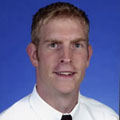 The UW Health Sciences news article announced our latest new project in collaboration with UW Medicine to test virtual-reality warm-ups for surgeons before they perform robotic surgery. The project will be lead by BRL-affiliate faculty member Thomas Lendvay, who is a UW associate professor of urology. Also leading the project is Timothy Brand from the Madigan Army Medical Center in Tacoma. The study will be performed in collaboration with the BRL’s Blake Hannaford. For more information about the project, check out the full article here–
The UW Health Sciences news article announced our latest new project in collaboration with UW Medicine to test virtual-reality warm-ups for surgeons before they perform robotic surgery. The project will be lead by BRL-affiliate faculty member Thomas Lendvay, who is a UW associate professor of urology. Also leading the project is Timothy Brand from the Madigan Army Medical Center in Tacoma. The study will be performed in collaboration with the BRL’s Blake Hannaford. For more information about the project, check out the full article here–
BRL researcher Kevin Huang hosts Early Engineering Institute students
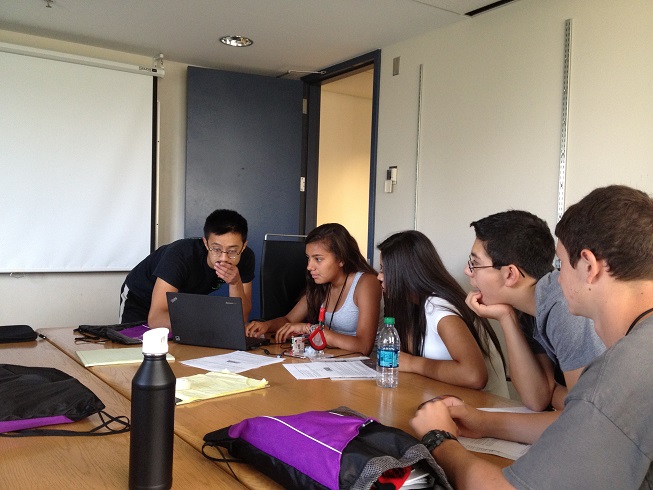 The Early Engineering Institute is a free program for residential 9th and 10th graders. The program engages these students in math and science related fields and helps prepare students for college and college applications. We hosted a short-term mini-research project involving basic programming and introduction to haptic enabled technologies. The students also had the opportunity to interact with haptic devices and demonstrations in the biorobotics lab.
The Early Engineering Institute is a free program for residential 9th and 10th graders. The program engages these students in math and science related fields and helps prepare students for college and college applications. We hosted a short-term mini-research project involving basic programming and introduction to haptic enabled technologies. The students also had the opportunity to interact with haptic devices and demonstrations in the biorobotics lab.Upcoming BRL Papers at IROS 2015
The BioRobotics Lab has had four papers accepted to the 2015 IEEE International Conference on Intelligent Robots and Systems in Hamburg, Germany this coming Fall. We’re looking forward to presenting our recent research and contributions to the robotics field. The 2015 ICRA papers authored by BRL researchers are:
“Improving Position Precision of a Servo-Controlled Elastic Cable Driven Surgical Robot Using Unscented Kalman Filter” by Mohammad Haghighipanah, Yangming Li, Muneaki Miyasaka, and Blake Hannaford.
“Path Planning for Semi-automated Simulated Robotic Neurosurgery” by Danying Hu, Yuanzheng Gong, Blake Hannaford, and Eric J. Seibel.
“Measurement of the Cable-Pulley Coulomb and Viscous Friction for a Cable-Driven Surgical Robotic System” by Muneaki Miyasaka, Joseph Matheson, Andrew Lewis, and Blake Hannaford.
“Haptic Passwords” by Junjie Yan, Kevin Huang, Tamara Bonaci, and Howard J. Chizeck.
Additionally, incoming EE Professor Sam Burden, who will be joining the BRL, has also coauthored a paper to be presented at IROS:
“Personalized Kinematics for Human–Robot Collaborative Manipulation” by Aaron M. Bestick, Samuel A. Burden, Giorgia Willits, Nikhil Naikal , S. Shankar Sastry, and Ruzena Bajcsy.
BRL at Robotics: Science and Systems
Earlier this month, BRL graduate student Katherine Pratt attended the Robotics: Science and Systems conference in Rome, Italy. She presented her work to the Women in Robotics II workshop, about using EMG signals to control virtual cursors on touchscreens. For more information, contact Katherine.
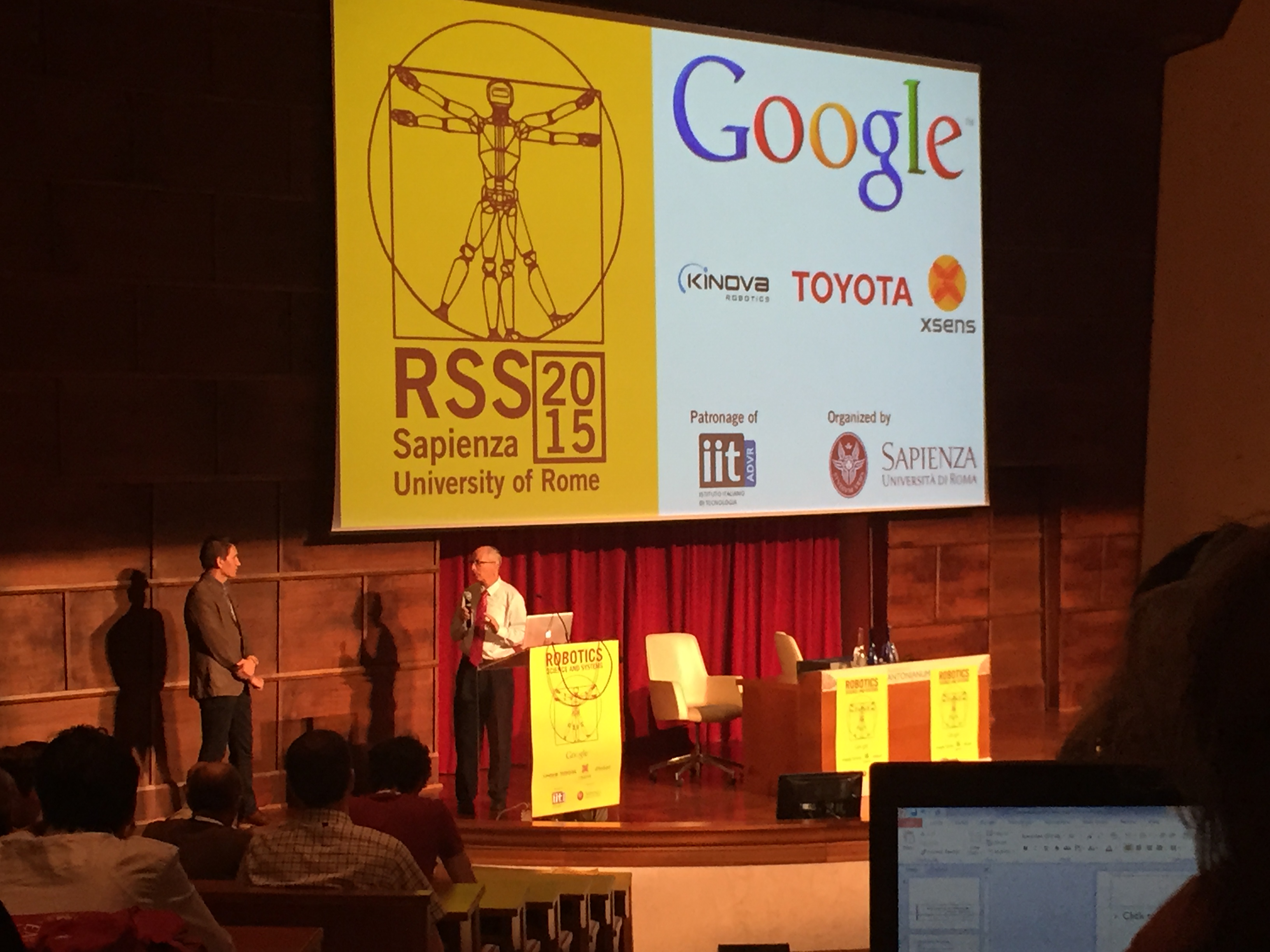
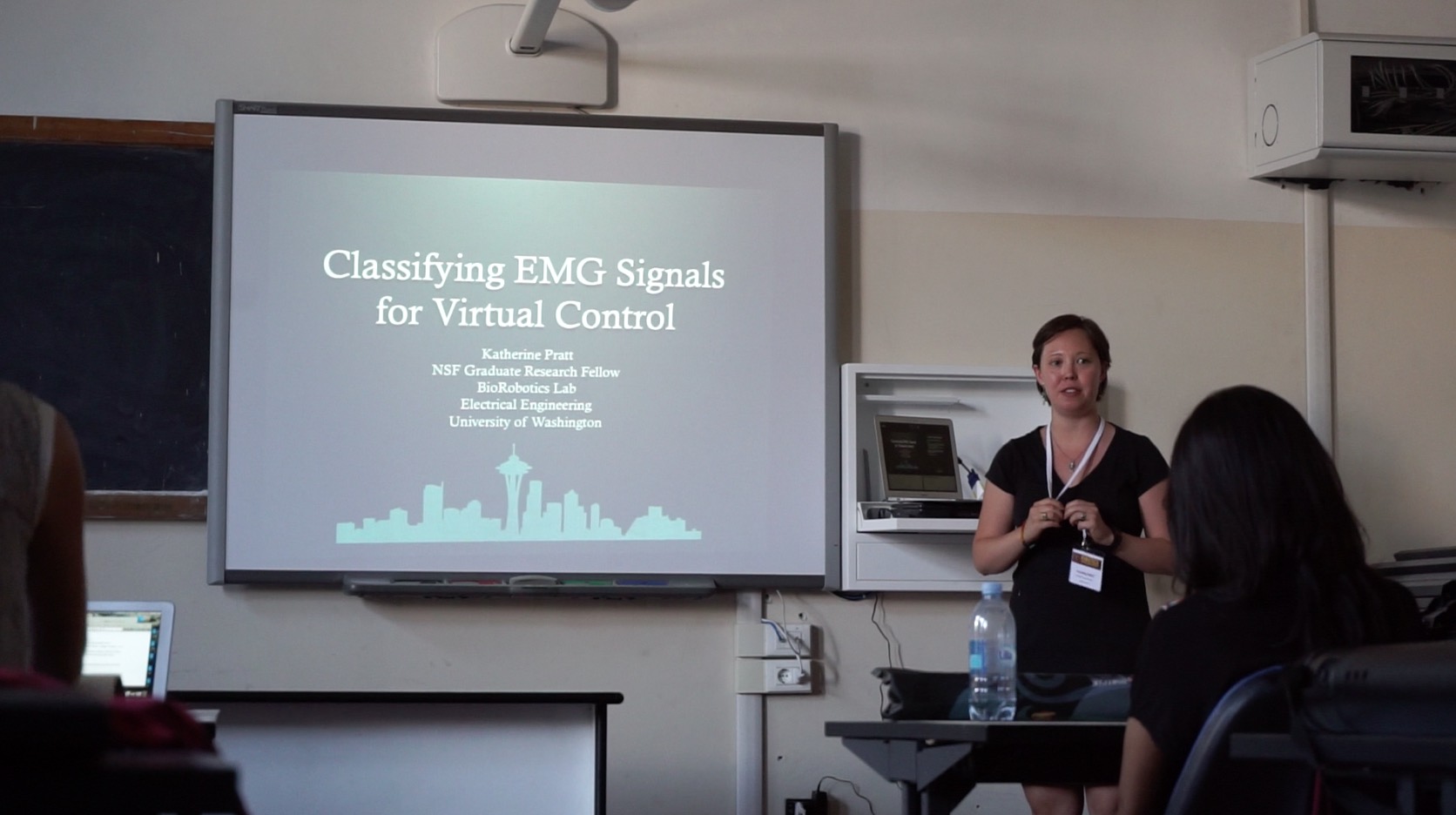
BRL Hosts UW Summer Math Academy Students
 For the second year in a row, Kevin Huang of the BRL has been helping with the UW Math Academy Summer Program. The Math Academy offers a free summer program to help Washington State high school students develop key math, engineering and problem solving skills. The program targets specifically underrepresented minorities. As part of the program, students participate in a three-day workshop, called a Focus Group. For this, Kevin has been a teacher and mentor in a small-scale design project focusing on basic information about haptics and haptic enabled systems. By the end of the program, the students receive a crash-course in the mechanisms by which humans sense touch, design an experiment to interrogate a person’s two-point threshold, and also learn to program a one degree-of-freedom haptic device. The students work to acquire key skills, such as experimental design, analysis, programming and teamwork skills necessary to succeed in engineering related fields. Read more about the UW Math Academy here.
For the second year in a row, Kevin Huang of the BRL has been helping with the UW Math Academy Summer Program. The Math Academy offers a free summer program to help Washington State high school students develop key math, engineering and problem solving skills. The program targets specifically underrepresented minorities. As part of the program, students participate in a three-day workshop, called a Focus Group. For this, Kevin has been a teacher and mentor in a small-scale design project focusing on basic information about haptics and haptic enabled systems. By the end of the program, the students receive a crash-course in the mechanisms by which humans sense touch, design an experiment to interrogate a person’s two-point threshold, and also learn to program a one degree-of-freedom haptic device. The students work to acquire key skills, such as experimental design, analysis, programming and teamwork skills necessary to succeed in engineering related fields. Read more about the UW Math Academy here. 
UW’s The Daily covers BluHaptics and C-SATS
The University of Washington’s student run news source The Daily ran an article about two BioRobotics Lab affiliated startups – BluHaptics and C-SATS. Check out their article here –
BRL Students Jeffrey Herron and Iris Jiang featured in CSNE Industry Relations Spotlight
The Center for Sensorimotor Neural Engineering dropped by the BioRobotics lab a little while ago to interview students who had benefited from the CSNE Industrial Liaison program. PhD student Jeffrey Herron and now graduated Iris Jiang both discussed their own experience and interactions with industry.
Howard Chizeck appointed 2015 Presidential Entrepreneurial Faculty Fellow
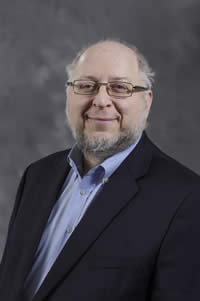 BRL Faculty Howard Chizeck has been appointed as a 2015 UW CoMotion Presidential Innovation Fellow due to his involvement in the University’s program for affiliated start-ups and his past entrepreneurial experience.
BRL Faculty Howard Chizeck has been appointed as a 2015 UW CoMotion Presidential Innovation Fellow due to his involvement in the University’s program for affiliated start-ups and his past entrepreneurial experience.
From the UW EE Announcement:
Chizeck’s nomination materials highlight his entrepreneurial success translating research into products. Early in his career, Chizeck founded Controlsoft, Inc., in 1985, which for 30 years has provided control algorithms and software for industrial uses and municipal water systems. More recently, Chizeck cofounded BluHaptics in 2013, which enables precision control of robots and drones and anticipates major expansion in late 2015. Chizeck was also involved in the inception of the Center for Sensorimotor Neural Engineering (CSNE) and has continued to be part of its leadership. Through the CSNE, Chizeck and his students have developed cutting-edge brain-computer interface technologies related to deep brain stimulation for the treatment of movement disorders such as Parkinson’s disease.
Read the full EE Announcement of his appointment here-